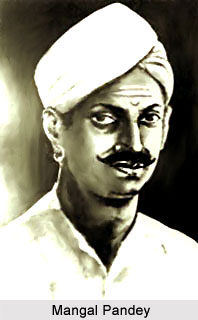 Reformations in India had been the steps towards Indian progress and development. There are several movement of reformations in India. Some of the reformations are Administrative Reforms, Social reforms, Economic reforms and Cultural Reforms
Reformations in India had been the steps towards Indian progress and development. There are several movement of reformations in India. Some of the reformations are Administrative Reforms, Social reforms, Economic reforms and Cultural Reforms
Administrative Reforms
Lord Dalhousie was appointed Governor General of India in 1848. His eight years of rule is considered one of the greatest periods of British rule in India. His policy of Annexation was a lethal weapon of conquest, which raised the rule of the East India Company to the height of glory. It was also during his rule that various reforms were brought to improve the conditions of India. Though these directly benefited the British yet they were foundations on which the country built itself after independence. Dalhousie becoming the governor General of India adopted the reforms in almost all fields.
Lord William Bentinck played a very important role even with regard to the judicial reforms in India. In the work of judicial reforms, Bentinck was assisted by Bentinck Butterworth, Bayley and Holt Mackenzie. In 1829, Bentinck abolished the Provincial Courts of Appeal and Circuit. These courts were not functioning properly and their work was in arrears. These judges did not acquire sufficient knowledge and acquaintance with the people of the country. They failed to protect the people from the oppression of the police. The under trials were made to live in prisons for months before their cases were heard and disposed of. And that is an important reason as to why Bentinck had abolished those courts.
Social Reforms of Raja Ram Mohan Roy
Social reforms of Raja Ram Mohan Roy have helped India to come out of the jinx of social taboo and malpractices. His was brought up in a very rich and wealthy family, and was witness to all the aspects of Brahmin culture that was prevalent in Bengal during that time. When the practice of sati was legally abolished in 1829, the credit for its abolition was given to the Governor General, Lord William Bentinck. However, as a contemporary English observer, herself a woman, pointed out - the legislation could not have been brought about `but for the powerful though unacknowledged aid of the great Hindu philosopher Ram Mohan Roy. Roy`s` great contribution towards this reform was to demonstrate that sati was not a religious duty sanctioned or upheld by Hindu scriptural tradition.
Social, Economic and Cultural Reforms by Lord William Bentinck
Lord William Bentinck was responsible for the abolition of Sati and Thugee. Both of these customs involved death. The only difference was that in case of Sati the death took place voluntarily and in the case of Thugee it was inflicted by the Thugs on others. The custom of Sati involved the death of a widowed woman because as it was in favour of the vested interests of many of the family members and that is the reason as to why the custom continued for long in spite of protests from time to time.
Education and Social Reform by Jawaharlal Nehru
Education and social reforms by Jawaharlal Nehru led to the success of the Indian state. He was an ardent advocate of education for Indian youth believing it essential for future progress. His government actually oversaw the establishment of many institutions of higher learning, including the All India Institute of Medical Sciences, the Indian Institutes of Technology, the Indian Institutes of Management and the National Institutes of Technology.
He also outlined the pledge and promise of five year plan to guarantee free and compulsory education at primary level to all children of India. For this purpose, however, the creation of mass village enrolment program, and the construction of thousands of mass village enrolment program and the construction of thousands of educational institutions were undertaken. Jawaharlal Nehru also launched the initiative like provision of free milk and meals to children in order to fight malnutrition. Adult education centers, vocational and technical schools were also organized for adults, especially in the rural areas.




















